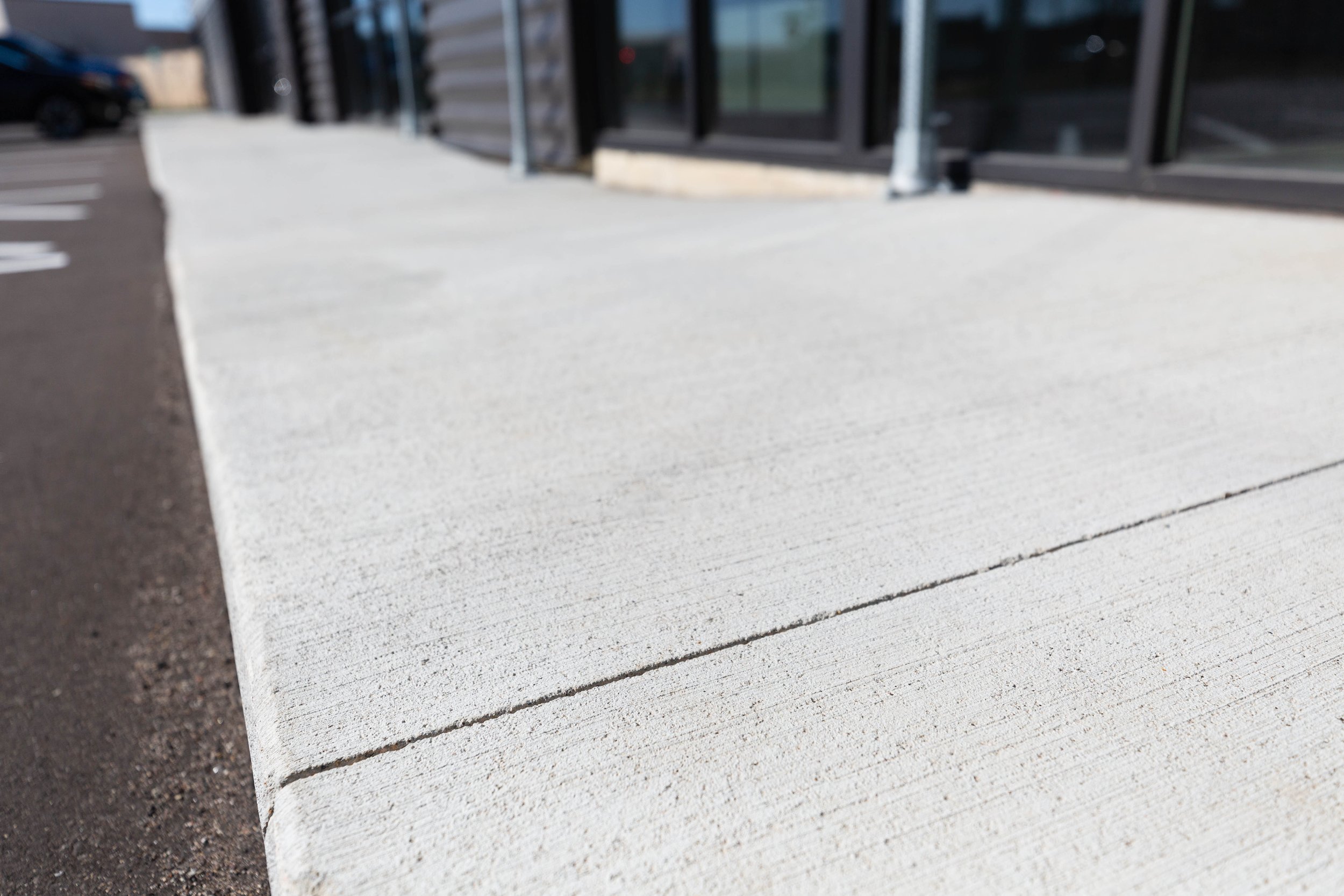How Long Does Concrete Take to Cure? Timeline & Tips for a Strong Finish
When you’re working on a construction project, whether it’s a new commercial foundation, a warehouse floor, or a polished concrete showroom—understanding concrete curing time is critical. It affects not just your project timeline but also the durability and long-term performance of your concrete surfaces.
So, how long does concrete take to dry? And what’s the difference between drying and curing? At Evenson Concrete Systems, we get these questions all the time. Let’s break it down.
Inside the Blog:
Concrete Curing Time vs. Drying Time: What’s the Difference?
Concrete Curing Time: The Standard Timeline
Factors That Impact Concrete Curing Time
Best Practices for Concrete Curing
Final Concrete Tips from the Pros at Evenson
Concrete Curing Time vs. Drying Time: What’s the Difference?
Before we get into timelines, it’s important to clarify a common misconception. Concrete doesn’t "dry"—it cures.
Curing is the chemical process called hydration, where water reacts with cement to harden and gain strength. While concrete may appear dry after a day or two, it’s still in the early stages of curing and has not reached full strength.
On the other hand, drying refers to moisture evaporation, which is typically relevant when applying floor finishes or coatings. Curing, however, is about developing the concrete’s structural integrity.
Concrete Curing Time: The Standard Timeline
While variables like temperature, humidity, mix design, and project scope all play a role, here’s a general timeline of concrete curing milestones:
24-48 Hours: Initial Set
Concrete is hard to the touch
Safe to walk on (light foot traffic only)
Forms can be removed in many cases
7 Days: Partial Strength
Concrete reaches approximately 70% of its design strength
Suitable for light loads (some construction can resume)
28 Days: Full Strength
Concrete reaches about 90–100% of its designed compressive strength
Considered fully cured for most purposes
Heavy equipment, vehicles, and structural loads can be supported
This 28-day curing period is the industry benchmark for most concrete applications, including driveways, loading docks, foundations, and warehouse slabs.
Factors That Impact Concrete Curing Time
While 28 days is a general rule, several factors can accelerate or delay curing:
1. Temperature
Hot weather can cause water to evaporate too quickly, leading to surface cracks or weaker concrete.
Cold weather slows hydration and can delay curing or even cause freezing in extreme conditions.
2. Moisture & Humidity
High humidity helps prevent rapid moisture loss, supporting proper curing.
Dry or windy environments may require moisture retention methods like curing blankets or plastic sheeting.
3. Concrete Mix Design
Accelerators can speed up curing in cold weather.
Retarders may be used in hot climates to slow the set time.
Water-to-cement ratio plays a huge role in overall strength development.
4. Project Size & Thickness
Thicker slabs or poured walls retain moisture longer and may cure more slowly.
Thin sections or decorative overlays may cure faster but require more careful moisture control.
Best Practices for Concrete Curing
Getting the timeline right is only half the battle—how you cure the concrete is just as important.
Here are some concrete tips to ensure optimal curing:
1. Keep It Moist
Moist curing is essential for strength development:
Apply water misting, wet burlap, or sprinklers regularly.
Use plastic sheeting or curing blankets to trap moisture and regulate temperature.
2. Don’t Rush the Timeline
While it may look dry, your slab still needs time. Avoid:
Driving on it before 7–10 days
Heavy loads before 28 days
Applying sealers or epoxy too early
3. Protect from the Elements
Cover the concrete in the first few days to:
Prevent rapid drying in heat or wind
Shield from freezing conditions
Avoid rain washing away surface cement paste
4. Use a Curing Compound
Curing compounds help retain moisture and are often sprayed on after finishing. These are especially useful on large commercial slabs where traditional moisture methods aren’t practical.
Concrete Curing FAQs
Q: How long does concrete take to dry before you can walk on it?
A: Typically, 24 to 48 hours is safe for light foot traffic—but only for walking, not loading or construction work.
Q: When can I drive on a new concrete surface?
A: Wait at least 7 days for passenger vehicles. For heavy trucks or commercial traffic, wait 28 days.
Q: Does concrete cure faster in summer?
A: Yes, but faster isn’t always better. Rapid curing can cause cracks if not properly managed with shade, water, or curing agents.
Q: Can rain ruin curing concrete?
A: If it rains within the first few hours of pouring, it can weaken the surface. However, light rain after 12–24 hours is usually fine, especially if protected.
Why Proper Curing Matters
Poor curing can result in:
Surface scaling
Cracks and crazing
Low compressive strength
Increased permeability
Reduced lifespan
For commercial clients, this means higher maintenance costs and premature repairs. At Evenson Concrete Systems, we take every measure to ensure proper curing techniques are used on every project, no matter the season or application.
Final Concrete Tips from the Pros at Evenson
Don’t cut corners—28 days may seem long, but strength development is critical for safety and performance.
Monitor the weather—plan your pours around temperature and humidity forecasts.
Use expert help—especially for complex commercial or industrial jobs, trust professionals who understand how curing impacts your bottom line.
Ready to Pour? Let’s Build Something Strong.
At Evenson Concrete Systems, we bring decades of experience to every project. From formwork to finishing—and every curing timeline in between—we help our clients build with confidence.
Need help planning your next pour or want to learn more about concrete curing time?
Contact us for a consultation or browse our project gallery to see our work in action.



